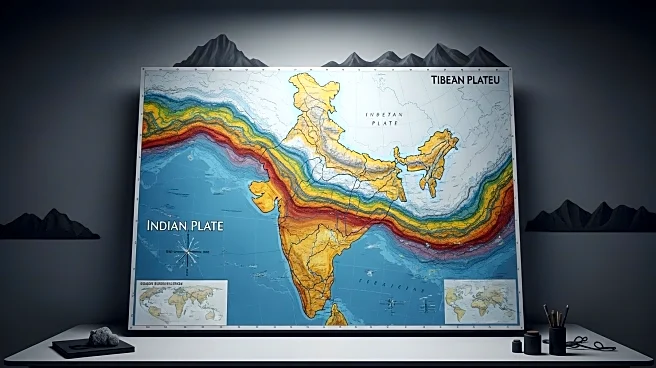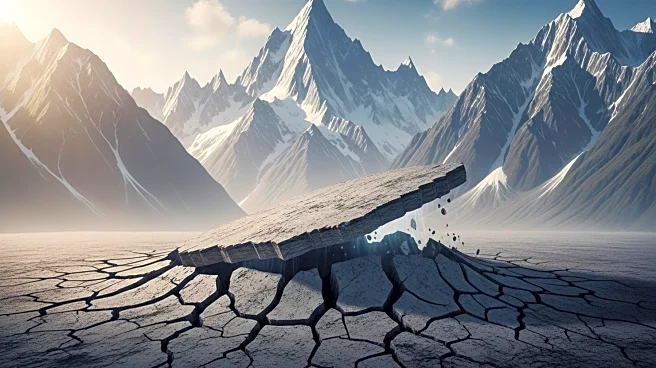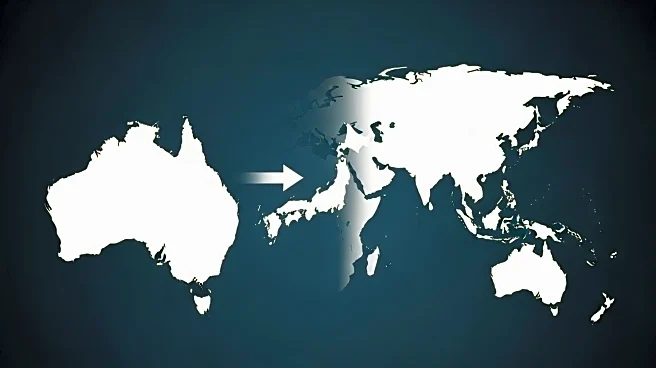What is the story about?
What's Happening?
A recent study presented at the American Geophysical Union conference has introduced a groundbreaking theory regarding the Indian Tectonic Plate. Traditionally, the collision between the Indian and Eurasian plates has been understood as a vertical shift, contributing to the formation of the Himalayas and the Tibetan Plateau. However, new research suggests a horizontal splitting of the Indian Plate, known as delamination. This process involves the upper part of the plate peeling away while the denser lower part sinks into the mantle. Evidence supporting this theory includes high concentrations of helium-3 isotopes found in northern Tibetan springs, indicating mantle proximity to the surface. Seismic activity in the region further supports the delamination theory, suggesting mantle intrusion into the crust.
Why It's Important?
The delamination theory could significantly alter the understanding of continental tectonics, particularly in the context of the Himalayas and Tibetan Plateau formation. This new perspective challenges the traditional view of tectonic plate behavior and could lead to revised models of geological processes. The implications extend to earthquake prediction and understanding mantle dynamics, potentially impacting geological research and public policy related to natural disaster preparedness. The findings also highlight the complexity of plate interactions, which could influence future studies on tectonic movements and their effects on global geological phenomena.
What's Next?
Further research and computer modeling are expected to explore the delamination process in greater detail. Scientists aim to simulate the behavior of the Indian Plate to understand the full extent of its impact on the region's geology. This could lead to new insights into the dynamics of plate tectonics and mantle interactions. Additionally, ongoing analysis of seismic data and helium isotope measurements will continue to refine the understanding of this phenomenon. The scientific community may also investigate similar processes in other tectonic regions, potentially leading to broader applications of the delamination theory.
Beyond the Headlines
The delamination theory raises questions about the ethical and practical implications of geological research. Understanding plate dynamics could improve earthquake prediction and disaster response strategies, potentially saving lives and reducing economic losses. However, it also underscores the need for responsible communication of scientific findings to avoid public panic. The research highlights the importance of interdisciplinary collaboration in addressing complex geological challenges, combining geophysics, chemistry, and computer modeling to advance knowledge.
AI Generated Content
Do you find this article useful?














